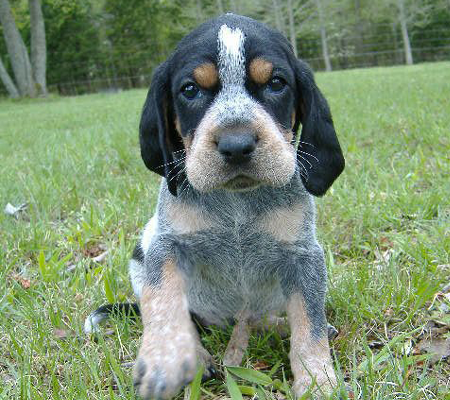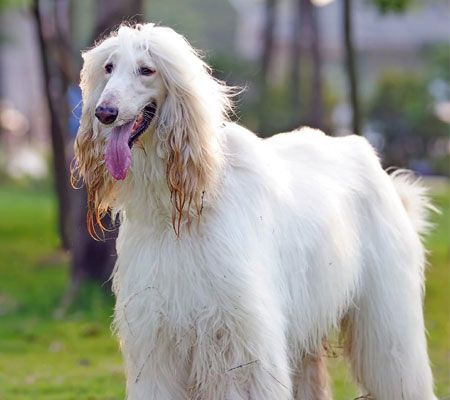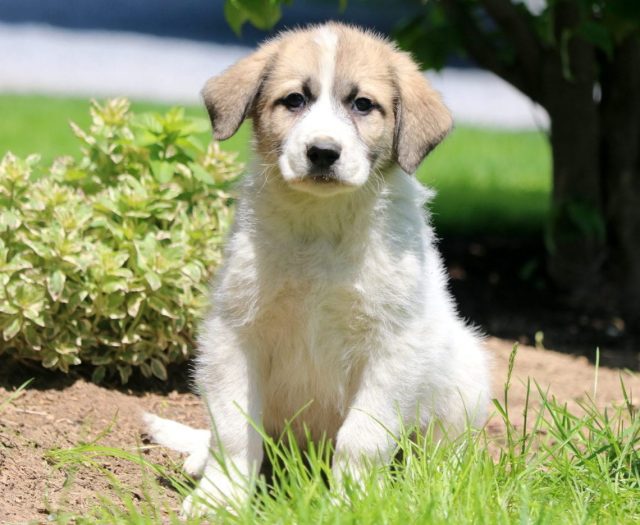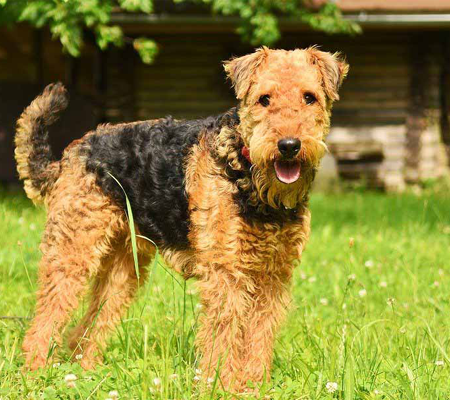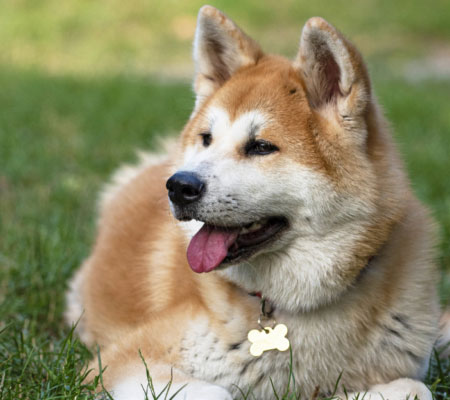The Bluetick Coonhound is a fast and powerful dog
breed with a beautiful coat. They have a sweet begging look and a huge bawl
mouth, which means they bark long and loudly. Although the Bluetick is
primarily a hunter, they may also be a wonderful housedog who adores its
owners.Even though they are purebred canines, they may end up in shelters or
rescue organisations. Keep in mind to adopt! If you want to bring a dog home,
don't go shopping.
This kind of dog is extremely sensitive and loving.
They'll get along with youngsters at home with adequate socialisation training.
They are not the finest apartment pets, though, because to their high activity
levels and exercise requirements. They require plenty of walks, fun, and space
to roam to be active. Families with large homes should fence in their yards
since these dogs may hunt stray animals.
Bluetick Coonhound Highlights
Breed Size
Large
Nature
Playful, Friendly
Energy Level
Active
Intelligence
Medium
Barking Level
Howler
Coat Length
Short
Breed Group
Hound
Droll Amount
Low
Good with
Familes, Children, Dog
Feed Level
Medium, High
Colour Type
Blue,black,brown / chocolate / liver
Other Facts
Good hiking companion and high prey drive
Dog History
Bluetick coonhounds originated in the United States,
and their pedigree extends back to the country's inception. They are supposed
to be descended from a gift of French hounds to George Washington. The English
foxhound, as well as a few other hound breeds, are said to have influenced the
creation of the bluetick coonhound.
As a result, a large scenthound with strong
endurance and a keen sense of smell for the hunting path was born. Frontiersmen
employed the breed for both raccoon and big-game hunting, thus its name. The
dogs work nicely together as a group.
Other kennel associations, such as the United Kennel
Club in 1946, have recognised the breed for decades. However, it was not
recognised by the American Kennel Club until 2009. Despite this, it is a
somewhat popular dog breed in the United States, and the University of
Tennessee has adopted it as its mascot.
22-27 inch 28-39 kg 10-13 year
Height

Weight

Life Span
Health and Care
The bluetick coonhound is a strong, robust breed
with an average lifespan of 11–12 years. Cuts, scratches, and leg injuries, as
well as annoying particles getting up their nostrils, may be a risk because to
their size, activity level, and sometimes insatiable need to smell out
fascinating things. When out on an expedition, exercise caution to keep your
bluetick safe and happy.
The bluetick coonhound, like many large breeds with
deep chests, is susceptible to stomach torsion, popularly known as
"bloat," which is a dangerous and life-threatening illness. After a
bluetick has exercised for a long time, it is important that they relax before
drinking too much water or eating.Blueticks are prone to ear infections because
to their lovely long ears, therefore owners should inspect and clean the ears
on a frequent basis.
"Ear infections are common in floppy ear dogs,
and these floppy ear dogs are no exception," Tracey explains. "Ear
infections can be caused by ear mites, yeast, or bacteria, among other things.
It's critical to distinguish between the three since each requires a distinct
form of treatment."
Many breeds are prone to hip joint problems,
particularly hip dysplasia, which is a degenerative joint condition, according
to Tracey. As their bluetick coonhounds grow and mature, owners should have
their veterinarian check their hips.
Care
To be happy and healthy, Bluetick coonhounds require
a lot of movement, as well as regular training and socialising. It's also
important to control their inclination to pursue a smell. Fortunately, their
grooming requirements are simple and basic.
Ensure that your dog has access to fresh water at
all times. Also, feed a high-quality, nutritionally balanced dog food. The
majority of owners serve two measured meals each day to their pets. Consult
your veterinarian about the sort and amount of food you should eat, as this
will vary according on your age, activity level, and other variables. Also,
avoid overfeeding your dog by being careful with treats and other meals.
Furthermore, bloat might be triggered if your
coonhound eats rapidly. You could be better off giving smaller, more often
meals or utilising a food puzzle to disperse the meal slowly.
Dog Breed Care Tips and Important
Instructions
With her short, coarse hairs that require weekly
brushing to aid with shedding, the bluetick coat has a sleek and polished look.
Blueticks' coats don't give much protection in the chilly winter months,
therefore owners must provide warm areas for their pets, as well as attractive
sweaters and thick jackets for outings. Bi-weekly nail trims are essential for
keeping bluetick paws healthy and ready for activity, just like they are for
any other breed.
Although you don't need to spend a lot of time and
money at the groomer every month, you will need to invest in excellent workout
equipment. This includes a body harness, long-line leashes, and a variety of
engaging and educational toys, as well as your yard's 6-foot fence. Because
these dogs might get carried away with their nose and forget their surroundings
(and even you! ), it's not a good idea to let them run free—especially in
locations where there are a lot of automobiles, other dogs, or humans.
"They tend to follow their nose due to the
nature of their breed as a scent hound, which might lead them into
trouble," Tracey adds.
The shedding rate of a bluetick coonhound's short,
lustrous coat is modest. To keep your coonhound looking its best, all it takes
is some basic grooming on a regular basis. Brush once a week to get rid of
stray hair and spread oils.
Depending on how unclean your dog has become, a bath
should be given once a month. Check whether it needs a monthly nail trim as
well; active dogs' nails naturally wear down and might go longer between trims.
Furthermore, like with other floppy-eared breeds,
it's critical to keep your dog's ears clean and dry. Check for dirt, debris,
redness, swelling, or other irregularities at least once a week.
Feeding
It's essential to examine the anatomy and digestive
system of the Bluetick Coonhound while choosing on the finest Bluetick Coonhound
diet. Dogs' digestive systems haven't changed much since they were
undomesticated wolves, and they're best adapted to eating fresh, high-protein
prey. This is what we term "species-appropriate nutrition," and it's
what a natural, raw diet aims to achieve.
The stomach of a dog isn't built to digest and
ferment carbs (the main ingredient in kibble). Even grain-free food, such as
beans, peas, and lentils, sometimes contain high quantities of starchy
carbohydrates. Feeding this to a dog puts their system under strain, generating
physiologically demanding insulin, glucagon, and cortisol surges throughout the
day, as well as inflammation and stress on important organs, which can lead to
death in certain situations.
There's no question that the canine species is
tough, and that even if they consume a diet lacking in natural components, they
will adapt and survive for a long time. Nonetheless, there is a significant
difference between surviving and flourishing.
Whether you pick Prodog Raw's no-fuss, no-nonsense
raw dog food or make your own DIY raw food recipes at home, the switch to a
natural species-specific diet will fuel your dog's well-being, regardless of
breed.
Fun Facts
They've got a big, bell-voiced hound with a nose
that picks up a week-old trail, the endurance to run that trail 30 hours at a
stretch, and the lusty courage to make him tackle anything that won't take a
tree before he catches him," says author Fred Gipson, who is best known
for the long-running popular book-turned-movie Old Yeller.
Savage Sam, the main character dog of the Old Yeller
sequel, is likewise a bluetick coonhound.
The bluetick coonhound may be connected to the
"French staghound," a canine breed given to President George
Washington by the French commander Marquis de Lafayette.
The bluetick coonhound's characteristic noises are
frequently referred to as "singing," since these puppies are capable
of creating loud, prolonged bays that were meant to travel vast distances with
their owners during hunting journeys.
Home Training Tips and General Information
Scenthounds are bluetick dogs. They're gone as soon
as their nose picks up a scent of possible prey. They're ruthless and
never-say-die hunters. The sleek and strong bluetick coonhound is unafraid of
bad weather, difficult terrain, marshes, rivers, and lakes.
Because bluetick dogs are predisposed for hunting,
it's crucial to start training them to accept your directions when they're
young and not entirely focused on following their nose. Begin basic obedience
training as soon as you receive your bluetick puppy. Every day, numerous times
a day, you should practise. Always give tasty snacks as a reward.
While you should set aside time for training, this
does not exclude you from having fun and relaxing with your bluetick puppy. Ask
him to obey orders at various times to reinforce what he's learnt. Before you
throw a ball, ask him to take a seat. When you get up to get a drink while
watching TV, ask him to stay.
Coonhounds are natural hunters. It runs in their
veins, and they thrive at it. Your bluetick coonhound's nose will develop as
she grows older. Soon enough, you'll see her zigzagging about the yard with her
nose to the ground, following in the footsteps of a rabbit that went by a few
days before.
It's your responsibility to harness her enthusiasm
with hunting prey and convince her to return to you after the hunt is complete.
You should have solidified your position as the leader by now. Never stray from
your assigned position. The importance of firmness and consistency cannot be overstated.
To teach your bluetick hound to come when called, a
lot of work on an extremely long leash, or long line, should be done. A line of
15 to 20 feet is an excellent place to start. Increase the length of the line
to 40 or even 50 feet as you and your coonhound advance. Choose a cue, such as
"Come!" or "Here!" and stick with it.
Allow your bluetick hound to go about on his long
line for a while so he forgets about it. When you call him to come, do it only
once and then use the long line to direct him toward you. Do not yank or drag
him around. Consider carefully reeling in a fish.
Reward him with a treat as soon as he arrives, and
tell him what a fantastic child he is in an exuberant and pleased tone. Then
repeat the process, but not too many times. The best approach to proceed is to
do 15-minute training sessions on a regular basis. You'll both be frustrated if
you wait much longer.
FAQS
|
What is the most important information I should know about a Bluetick
Coonhound? |
|
Bluetick Coonhounds are intelligent and loyal dogs. These dogs, who are
wary of strangers, require socialisation and training. They get along nicely
with youngsters and are not aggressive towards other dogs if properly taught.
When other animals are around, Bluetick Coonhounds require monitoring due to
their intense prey drive. |
|
Is training a Bluetick Coonhound difficult? |
|
It's no secret that bluetick coonhounds are notorious for being tough to
train. They're frequently characterised as obstinate and even foolish. |
|
Is it true that Bluetick Coonhounds make good house dogs? |
|
The Bluetick Coonhound is a devoted and affectionate scenthound with a
regal history. It makes an excellent family companion, especially around
older children. They can be reclusive and distrustful of strangers, as well
as being highly noisy, but with the right training and socialisation, they
can make wonderful companions. |
|
What is the best way to care for a blue tick hound? |
|
At least once a week, brush her coat as needed. Bluetick Coonhounds have
healthy teeth, which you can maintain by cleaning them at least twice a week!
Even as a puppy, clean her ears once a week. Make sure her floppy ears don't
get wet. |
|
What is the best time to begin training my coonhound? |
|
When the puppy is around 12 weeks old and has had its vaccines, coonhound
training should begin. Training should ideally be done either first thing in
the morning or after it has rained. |
|
How much physical activity does a Bluetick Coonhound require? |
|
Exercise. The Bluetick Coonhound, as a working breed, requires a lot of
activity. The Bluetick may become destructive and difficult to handle if not
given at least a half hour of physical and mental activity every day. It's
preferable if the time is closer to an hour. |
|
When do Bluetick Coonhounds become pregnant? |
|
Although the average age of a dog's first heat is six months, this can
vary greatly. Some dogs can go into heat as early as four months of age,
while bigger breeds might take up to two years to reach their first heat.
Breeders that are responsible never breed a dog in her first or even second
heat. |
|
What does Bluetick stand for? |
|
(blutk) noun. an American hound with a black, tan, and white coat that is
flecked or mottled with black and is used to hunt foxes and raccoons. |
Bluetick Coonhound Unique Name
| Male Name | Female Name |
|---|---|
| Bandit | Aspen |
| Bingo | Ava |
| Bo | Blondie |
| Dodge | Baron |
| Jax | Bear |
| Leo | Callie |
| Levi | Edie |
| Logan | Ella |
| Max | Hailey |
| Norm | Inez |
| Ranger | Izzy |
| Sammy | Jade |
| Sawyer | Juliet |
| TJ | Kira |
| pencer | Lola |
| Tommy-boy | Nala |
| Tuesday | Sally |
| Violet | Sky |
| Whiskers | Bridgett |
| Wiz | Skye |

